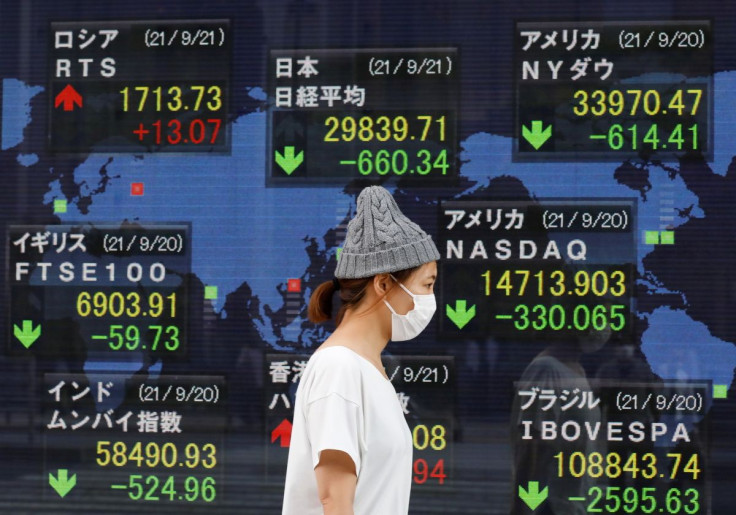Wall Street Dips While Treasury Yields, Oil Prices Drop

Wall Street stocks turned lower in a volatile session and oil prices fell on Tuesday with risk appetite appearing to falter as investors turned to safe havens such as Treasuries amid fears about inflation and slowing economic growth.
U.S. Treasuries rallied, with the yield on the benchmark 10-year note tumbling from more than a three-year high to below 3% as the market reassessed the inflation outlook a day before U.S. consumer price index (CPI) data is released.
Markets have been volatile due to a combination of surging inflation and fears that monetary tightening aimed at slowing price increases would also cause a slowdown in economic growth.
Last week central banks in the United States, Britain and Australia raised interest rates and investors girded for more tightening as policymakers fought soaring inflation. [.N]
While all three U.S. indexes were rebounding from Monday's sell-off, enthusiasm for equities quickly faded.
"There's a tonne of cross currents right now. Liquidity is drying up and volatility is the name of the game," said Matthew Miskin, co-chief investment strategist at John Hancock Investment Management in Boston.
"The tech and growth side of the (equities) market is such a big weight. Treasury yields going up as fast as they did spooked risk assets. If they could take a breather here it could let the market ... find some footing."
Miskin was reassured by Federal Reserve official comments on Tuesday that suggested efforts to engineer a soft landing. In particular he pointed to Cleveland Federal Reserve Bank President Loretta Mester's comment that while unemployment may increase and growth slow, the Fed's policy tightening should not push the economy into a "sustained downturn."
"They've been so hawkish so any slight move off that the market wants to sniff that out," said Miskin. "Sentiment wise a lot of people are looking for capitulation. The dots aren't completely connecting yet for that."
At 1130 EDT (1530 GMT), the Dow Jones Industrial Average fell 97.45 points, or 0.3%, to 32,148.25, the S&P 500 lost 10.91 points, or 0.27%, to 3,980.33 and the Nasdaq Composite dropped 16.49 points, or 0.14%, to 11,606.76.
The pan-European STOXX 600 index rose 0.80% and MSCI's gauge of stocks across the globe shed 0.33%, after earlier rising as much as 1.44%.
The U.S. dollar was choppy on Tuesday as it held near a two-decade high ahead of a key reading on inflation that could provide insight on the Fed policy path.
The dollar index rose 0.164%, with the euro down 0.19% to $1.0535. The Japanese yen weakened 0.03% versus the greenback at 130.29 per dollar, while Sterling was last trading at $1.2301, down 0.24% on the day.
Earlier data showed China's export growth slowed to its weakest in almost two years, as the central bank pledged to step up support for the slowing economy.
Oil prices fell in volatile trade as the market balanced impending European Union sanctions on Russian oil with demand concerns related to coronavirus lockdowns in China, a strong dollar and growing recession risks. [O/R]
U.S. crude recently fell 1.85% to $101.18 per barrel and Brent was at $103.92, down 1.91% on the day.
Benchmark 10-year notes last rose 33/32 in price to yield 2.9497%, from 3.079% late on Monday.
Spot gold dropped 0.4% to $1,847.41 an ounce. U.S. gold futures % to $1,857.10 an ounce.
Elsewhere, Bitcoin was up 4% after earlier falling to its lowest level since July 2021. Tuesday's gain allowed it to recover some losses when it tumbled 11.8% on Monday plunge, which had been its biggest daily fall since May 2021.
© Copyright Thomson Reuters 2024. All rights reserved.




















